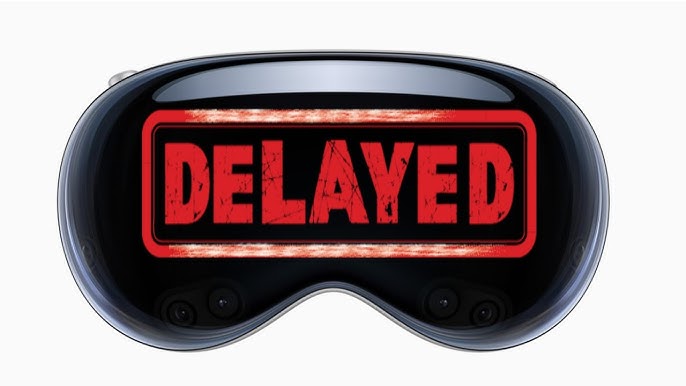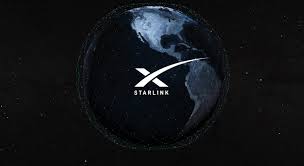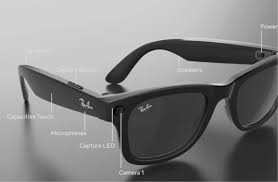Apple’s Vision Pro 2 Delay: What It Means for Mixed Reality Fans

Apple’s mixed reality headset, the Vision Pro, has been a hot topic since its debut in 2024. Now, news has surfaced that the Apple Vision Pro 2, originally expected sooner, won’t arrive until at least 2027. Instead, Apple is working on a lighter, cheaper model to make mixed reality more accessible. This shift has sparked curiosity and questions among tech fans. Let’s explore why Apple made this choice, what the new headset might offer, and how it impacts the future of mixed reality.
Why Apple Delayed the Vision Pro 2
Apple’s decision to push back the Vision Pro 2 stems from challenges with the first model. The original Vision Pro, priced at $3,499, was a groundbreaking device but faced hurdles. Many found it too expensive and heavy for everyday use. Sales were lower than expected, with only about 400,000 units sold in the first year compared to hopes of nearly a million.
Apple wants to make sure the next version is a hit. By delaying the Vision Pro 2, the company is taking time to improve features and create practical uses that appeal to more people. For example, they’re focusing on making the headset lighter and adding better apps for work and entertainment. This delay shows Apple is listening to feedback and aiming for a stronger product.
Key Reasons for the Delay
- Cost Concerns: The high price turned away many buyers.
- Weight Issues: Users reported neck strain from the heavy design.
- Limited Uses: The first Vision Pro lacked enough everyday applications.
- Market Competition: Cheaper headsets like the Meta Quest 3 are gaining popularity.
| Aspect | Original Vision Pro | Vision Pro 2 Expectations |
|---|---|---|
| Price | $3,499 | Likely similar or higher |
| Weight | Over 1.3 pounds | Lighter design planned |
| Chip | M2 and R1 | Upgraded M5 chip |
| Release Year | 2024 | 2027 or later |
A Cheaper, Lighter Vision Air in 2027
Instead of rushing the Vision Pro 2, Apple is prioritizing a more affordable model, possibly called the Vision Air, set for release around 2027. This headset could cost between $1,500 and $2,000, making it closer to the price of a high-end iPhone. The goal is to attract more users by offering a lighter design and a lower price tag.
The Vision Air might use plastic instead of glass and a simpler iPhone processor instead of the powerful Mac-grade chips in the Vision Pro. It could also have fewer sensors to cut costs. These changes aim to make the headset more comfortable for longer use, like watching movies or working on virtual projects. I once tried a friend’s Vision Pro for a virtual meeting, and while it felt futuristic, the weight made my neck ache after 30 minutes. A lighter model could solve this problem and make mixed reality a part of daily life.
Pros and Cons of the Vision Air
- Pros:
- More affordable price range.
- Lighter design for better comfort.
- Likely to support popular apps like Apple Music and virtual workspaces.
- Cons:
- May have less powerful features than the Vision Pro.
- Fewer sensors could limit advanced tracking.
- Still years away from release.
What to Expect from the M5-Powered Vision Pro in 2025
While the Vision Pro 2 is delayed, Apple isn’t standing still. In 2025, they plan to release an updated version of the original Vision Pro with a new M5 chip. This chip promises better performance, especially for spatial computing and artificial intelligence (AI) features. The update may also include a more comfortable strap to address user complaints about weight.
This refreshed model won’t be a full second generation but more like a “Vision Pro 1.5.” It’s expected to keep the same $3,499 price, which might still feel steep for many. However, the M5 chip could make apps run smoother and support new AI tools, like a virtual assistant designed for mixed reality. Imagine asking your headset to pull up a 3D map or organize your calendar while you’re in a virtual workspace—that’s the kind of upgrade Apple is aiming for.
Comparison: Original Vision Pro vs. 2025 Update
| Feature | Original Vision Pro (2024) | Updated Vision Pro (2025) |
|---|---|---|
| Processor | M2 and R1 chips | M5 chip |
| Price | $3,499 | ~$3,499 |
| Design Changes | Heavy, two strap options | New strap, possibly lighter |
| AI Features | Limited | Enhanced with Apple Intelligence |
The Bigger Picture: Apple’s Mixed Reality Strategy
Apple’s shift in focus reflects a broader plan to compete in the growing extended reality (XR) market, which includes virtual reality (VR) and augmented reality (AR). Companies like Meta, with their affordable Quest 3 headset, have set a high bar for accessibility. Apple wants to avoid repeating the mistakes of its HomePod mini, which was cheaper but didn’t become a mainstream hit due to limited uses.
By delaying the Vision Pro 2 and working on the Vision Air, Apple is betting on building a stronger ecosystem first. This means creating more apps and use cases, like virtual classrooms, immersive gaming, or even fitness apps that guide you through workouts in a 3D space. I remember using a VR headset for a fitness app once, and it felt like a personal trainer was right in front of me. If Apple can nail this, it could make mixed reality a must-have for teens and adults alike.
Apple’s XR Goals
- Build a wider range of apps for work, play, and learning.
- Make headsets more affordable to reach everyday users.
- Improve comfort for all-day use.
- Stay ahead of competitors like Meta and Samsung.
How This Affects You as a Consumer
For students and young tech fans, the delay of the Vision Pro 2 might feel disappointing, but it’s not all bad news. The upcoming Vision Air could be a game-changer, offering a price that’s easier to save up for. Plus, the 2025 Vision Pro update will give developers more time to create cool apps, like interactive study tools or virtual hangout spaces. Picture studying history by “walking” through ancient Rome—that’s the kind of experience Apple is aiming for.
If you’re saving up for a mixed reality headset, you might want to wait for the Vision Air in 2027. It could offer a better balance of price and features. For now, you can explore other options like the Meta Quest 3, which is much cheaper at around $500 and great for gaming. Check out more about it at Meta’s official site. Alternatively, keep an eye on Apple’s updates at Apple’s Vision Pro page for the latest news.
Tips for Students Interested in Mixed Reality
- Start exploring free VR apps on your phone to get a taste of mixed reality.
- Save up for a budget-friendly headset if the Vision Pro is too pricey.
- Follow tech news to stay updated on Apple’s progress.
What’s Next for Apple’s Mixed Reality Future
Apple’s delay of the Vision Pro 2 shows they’re playing the long game. They’re also working on smart glasses, expected around 2028, which could be even lighter and more stylish. These glasses might connect to your iPhone or Mac, making them a seamless part of your daily tech. The delay gives Apple time to perfect these ideas, ensuring they don’t rush out a product that flops.
For now, the mixed reality world is still evolving. Apple’s focus on a cheaper Vision Air and an upgraded Vision Pro in 2025 means more options for users. As a 15-year-old tech enthusiast myself, I’m excited to see how these headsets could change how we play games, learn, or even chat with friends in virtual spaces. The wait might be long, but Apple’s vision could make mixed reality worth it.
Future Predictions
| Product | Expected Release | Key Features |
|---|---|---|
| Vision Pro (M5) | 2025 | Faster chip, better AI, new strap |
| Vision Air | 2027 | Lighter, cheaper, iPhone processor |
| Smart Glasses | 2028 | Wearable all-day, Mac/iPhone tether |
This article offers a fresh look at Apple’s Vision Pro 2 delay, explaining why it happened and what’s coming next. By focusing on a lighter, more affordable Vision Air and an M5-powered update, Apple is setting the stage for a stronger mixed reality future. Stay tuned for more updates as Apple continues to shape the XR world!





